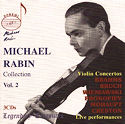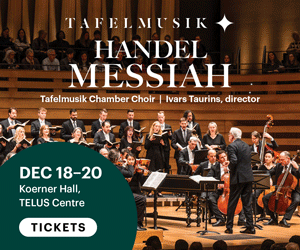|
Dowland - The Queen’s Galliard (Lute Music Vol. 4) Nigel North Naxos 8.570284 The fourth and final CD of a series devoted to John Dowland’s lute music, this disc’s program of galliards, corants and Elizabethan song tunes offers an affectionate and intriguing glimpse into the musical development of this brilliant composer. Though Dowland’s familiar pensive spirit is rarely out of sight, its reflection through the prism of dance and song makes for delightful listening of a more lively kind, especially in the expert musical hands of Nigel North. This CD is replete with great tunes expertly played. Several of the composer’s earlier and less familiar galliards can be heard here, of which John Dowland’s Galliard is a particular gem; also included are some of his most famous, such as the Frog Galliard, which receives an elegantly spry performance. Also offered are various lute song and broadside ballad tunes set for lute alone, including Can she excuse, Lord Willoughby’s welcome home, Fortune my foe, Goe from my window and other Shakespeare-era chart-toppers. North also performs his own particularly beautiful version of Francis Cutting’s Awake sweet love. Besides his exemplary playing, North’s readable notes provide much helpful and interesting information. And the recorded sound on this disc is beautiful. Congrats to Naxos for their support of Dowland’s remarkable music, as played by one of his most excellent champions. Alison Melville |
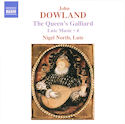 |
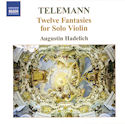 |
Twelve Fantasies for Solo Violin Augustin Hadelich Naxos 8.570563 Like a musical wolf in sheep’s clothing, the Telemann Fantasies lie in wait for the competent but unsuspecting amateur violinist searching for solo Baroque works less challenging than the Bach Sonatas and Partitas. I’ve been trying to play these things for over 35 years - which probably says more about my reluctance to practise and the relative balance of “competent” and “amateur” in my technique than anything else - and while Telemann clearly intended them for amateurs and students the deceptively straightforward writing is often quite angular and strewn with technical pitfalls. Composed in 1735, the Fantasies display elements of the Baroque sonata, concerto and suite, with limited two-part writing and less multiple stopping than the Bach; the 1968 Barenreiter edition, however - and with classic understatement - remarked that “the double stopping and chordal work can only be tackled by a competent player.” Augustin Hadelich’s playing goes far beyond merely competent, making everything sound easy and natural without ever being trivial. The short, slow chordal passages could perhaps be embellished more - comparison with the solo Asseggai of Telemann's Swedish contemporary Johan Helmich Roman would certainly suggest this - but Hadelich's ornamentation is clean and unobtrusive. These are not the Bach solo works in any respect, leaning more towards Corelli than to Telemann's German contemporary, but they still have much to recommend them. Recorded in Newmarket by the regular Naxos team of Norbert Kraft and Bonnie Silver the sound quality is, as always, impeccable. Terry Robbins |
|
Haydn – La Passione (Symphonies 41; 44; 49) Arion; Gary Cooper early-music.com EMCCD-7769 www.early-music.com) Montreal’s Arion orchestra is joined in this recent CD by the English harpsichordist Gary Cooper in a program of three remarkable symphonies from Haydn’s so-called “Storm and Stress” period. What makes this recording unusual, aside from the highly contentious inclusion of a harpsichord continuo part, is the modest size of the 17 member orchestra, ostensibly modelled after the forces available to Haydn at the Esterhazy palace where these works were first heard. This recording claims to be a premiere of sorts, in that the performance of the Symphony No. 41 is presented, as Cooper explains in the booklet notes, “without the pomp and clatter of additional trumpets and timpani”. An admirable intent to be sure, but regrettably there’s clatter galore from the over-miked horns and an often relentless harpsichord part which contributes a considerable din of acrid overtones of its own. Though the virtuosity of the ensemble is quite evident, particularly in the hell-for-leather tempos of the 44th and 49th symphonies, Anton Kwiatkowski’s over-the-top sound engineering (or to be fair, perhaps it’s a distorted pressing of the album that’s at fault) inflates the modest ensemble to gargantuan proportions, undermining the very intimacy that was the stated intent of this small-scale performance. If heavy-metal Haydn is your thing you may enjoy these bristly, bracing interpretations. Daniel Foley |
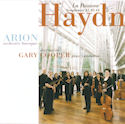 |
CLASSICAL AND BEYOND
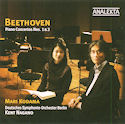 |
Beethoven - Piano Concertos Nos. 1 & 2 Mari Kodama; Deutsches Symphonie-Orchestre Berlin; Kent Nagano Analekta AN 2 9955 I looked forward to hearing these concertos after Nagano’s Beethoven Fifth Symphony recorded with the Montreal Symphony (AN2 9942-3). That performance was a wave of fresh air in dynamics, phrasing and tempi and a welcome addition to the catalogue, holding one’s attention to the last bar. Mari Kodama is endowed with astonishing virtuosity, self assurance and control. This reminded me of Glenn Gould when his limitless ability, boarding on arrogance, could stand in the way the music. As these performances unfold I was persuaded that she is offering genuine musical insights with a personal touch that is quite appealing. About eight minutes into the first movement of the first concerto, Beethoven’s genius is manifested using simple means for the unfolding drama of the music. Descending scales, played 3 times, remind me of similar scales in Mozart’s Don Giovanni which portend the demise of the Don. How these simple passages are played is one of the critical measures of artistic insight. No reservations here nor with the inner world of the slow movement. The third movement, taken at a brisk pace, is exhilarating. Kodama’s style is perfectly akin to the second concerto. Her no nonsense, clear approach suits this work perfectly. Sparkling throughout and as stylistically satisfying as any I know of. The orchestra is just the right size for these works and Nagano, as expected, provides illuminating support, fresh and pointed beyond merely impeccable. The spacious recording is clean and well projected with a pleasing ambience. It will be quite interesting to hear the other three concertos as they may require less of the sparkling pianism and more heavyweight musicianship. Odds are she’ll make it brilliantly. Bruce Surtees |
|
Chopin André Laplante Analekta AN 2 9964 We can only wonder why it took Andre Laplante – a pianist long renowned for his interpretations of late-romantic repertoire – until now to record an all-Chopin disc. But in light of the well-balanced program and superb playing, it was well worth the wait! Included on this Analekta recording are 2 major works, the Sonata in B flat minor, Op. 35 and the Fantaisie Op.49, in addition to two early Nocturnes, (Op. Post. in C sharp minor, and Op.15 No.1), and the three Mazurkas Op.63. The Sonata, the second of Chopin’s efforts in the form, raised more than a few eyebrows when first published in 1840. Schumann even went so far as to refer to it as a binding together of “four of his maddest children.” No matter, Laplante approaches the music with aplomb – this is powerful and noble playing, and my only quibble - and a minor one at that - would be the overly brisk pace he takes in the opening movement. Yet the familiar third movement “Funeral March” is treated with the solemnity it deserves, and the finale, with those fleeting octaves once described as “wind over church-yard graves” embodies a spirit that surely would have pleased Edgar Allan Poe. The two nocturnes and three mazurkas which follow are miniature jewels, but to my mind, Laplante saves his best for last with the magnificent F minor Fantaisie, hailed by many as Chopin’s greatest work. I have heard many versions over the years, but I can honestly say this is among the finest I have encountered. His treatment is nothing less than sublime, from the ominous opening march, to the thrice-heard secondary theme, a veritable love-song. There is a world of contrasting moods in this piece, and Laplante effortlessly captures them all, thus bringing this most satisfying disc to a close. Richard Haskell |
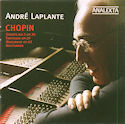 |
|
Brahms; Korngold - Violin Concertos Nikolaj Znaider; Wiener Philharmoniker; Valery Gergiev RCA Red Seal 88697103362 The young Danish violinist Nikolaj Znaider appears in the august company of the mighty Vienna Philharmonic in this live recording from December 2006. The notoriously volatile Valery Gergiev provides an unusually restrained interpretation of the Brahms Concerto, well in tune with the beautifully honeyed tone Znaider draws from the Guarneri “del Gesu” violin once owned by Fritz Kreisler and now on loan to Znaider thanks to a Dutch foundation. It is a performance of striking intimacy, long on beauty though a bit short on the drama that other artists have found in this celebrated work. Though Znaider gives it his all, it seems Gergiev’s reticence in such familiar repertoire makes for just another day at the office as far as the orchestra is concerned. Gergiev and the Philharmonic seem much more engaged in Erich Korngold’s 1945 Violin Concerto, a work which is derived in large part from the composer’s Hollywood film scores composed during his decade of exile from his native Vienna. Attractively scored and direct in expression, it was premiered by Jascha Heifetz in 1947 and though it found little favour in European circles of the time it has never fallen out of the repertoire. All in all, a superb addition to Znaider’s discography. Daniel Foley |
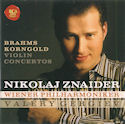 |


